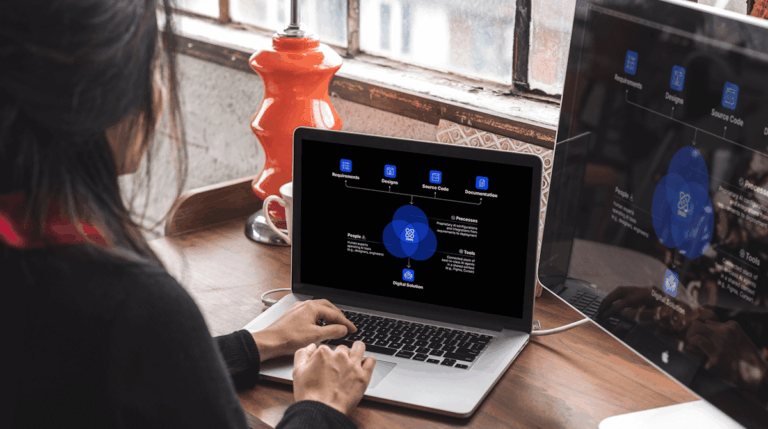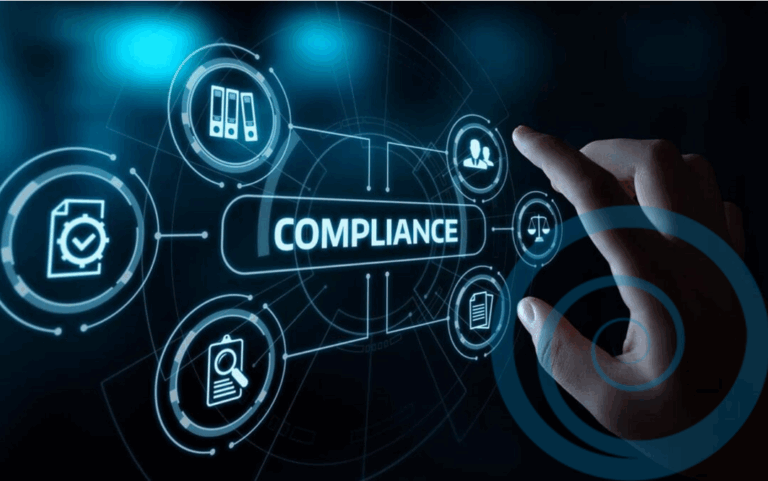AI adoption has matured. The early rush to experiment—where startups prioritized speed over responsibility—has given way to a new reality for mid-market and enterprise organizations. AI compliance with evolving regulations is no longer optional; it is central to building trust, enabling adoption, and driving innovation.
The regulatory landscape has shifted dramatically. Organizations can no longer rely on loose governance or informal guardrails. To deploy AI responsibly and avoid penalties, they must align with frameworks, adhere to applicable laws, and maintain a strong security posture.
The key challenge today is not drafting responsible AI policies, but embedding them into daily workflows. Moving from policy to practice means making compliance part of the organizational culture—an ongoing process that connects strategic intent with everyday execution.
Risk Management as a Continuous Process
AI governance cannot be static. With regulations evolving rapidly, organizations must treat compliance as an ongoing cycle of monitoring, assessment, and improvement. Establishing a governance committee, keeping compliance frameworks as living documents, and appointing an internal champion ensures that changes in regulation are quickly translated into practical guardrails.
Clear ownership turns compliance from abstract policy into concrete action. When product and legal teams collaborate closely, they can implement risk management strategies, conduct regular assessments, and maintain programs aligned with both regulatory requirements and industry best practices. Continuous monitoring is essential—not only to detect emerging risks but also to adapt quickly as new regulations take shape.
Embedding Responsible AI Governance in Product Development
Compliance is too often seen as a late-stage hurdle, but responsible AI demands early integration. Product leaders must understand their organization’s compliance frameworks and make them central to design and build decisions.
Embedding AI compliance into design sprints, prioritizing data security, and monitoring for bias reframes governance as a design principle rather than a checkbox. Implementing robust access controls and securing sensitive data within AI models are critical to minimizing risk. When applied proactively, responsible AI governance becomes a natural part of the product lifecycle.
Building Human Capabilities: IQ Meets EQ
Institutionalizing compliance is not just about frameworks—it’s also about people. Building organizational “AI IQ” through technical training ensures employees across functions understand how AI works and how to use it responsibly.
Equally important is developing “AI EQ.” Emotional intelligence is essential in guiding employees and clients through the uncertainty of AI adoption. Combining technical competence with empathy helps organizations foster trust, reduce resistance, and encourage adoption. In practice, this means investing in both technical upskilling and change management capabilities to support responsible AI initiatives.
Governance as Smart Innovation
There is a persistent myth that compliance slows innovation. In reality, the absence of governance creates bigger bottlenecks down the line. Projects without guardrails plateau, backfire, or collapse under regulatory scrutiny.
By adopting structured risk management practices, organizations can identify, assess, and mitigate risks throughout the AI lifecycle. This proactive approach reduces delays, minimizes rework, and accelerates time-to-market. Far from being a burden, AI governance is the foundation of smart innovation—enabling companies to scale responsibly while maintaining trust and performance.
Transparency and Documentation Build Trust
For many enterprises, the greatest fear around AI is the “black box.” Transparency through documentation helps eliminate this concern. Recording processes, frameworks, and safeguards provides accountability while also reducing perceived risk.
Documenting compliance risks and gaps not only enables remediation but also builds confidence with stakeholders. Through frameworks like 3PO and DB90, detailed documentation demonstrates that compliance isn’t an afterthought—it’s engineered into the way AI solutions are built and delivered.
From Policy to Daily Workflows
Ultimately, institutionalizing AI compliance comes down to culture. Policies must move beyond static guidelines and flow into the daily operations of teams. That begins with assigning a dedicated compliance owner, empowering a governance committee, and reinforcing accountability across functions.
Maintaining strong oversight of AI deployments—whether through private cloud environments or on-premises infrastructure—is especially critical in regulated industries. These measures ensure organizations can minimize risk, meet regulatory expectations, and operate with confidence.
When responsibility is clearly defined and reinforced in daily workflows, compliance becomes second nature. It shifts from being a barrier to becoming a driver of trust, resilience, and innovation.
Closing Thought
AI compliance is not separate from innovation—it is the foundation of it. By embedding responsible AI practices into product design, investing in both technical and human capabilities, and building transparent governance frameworks, organizations can confidently move from policy to practice.
Smart innovation begins with responsible AI.






